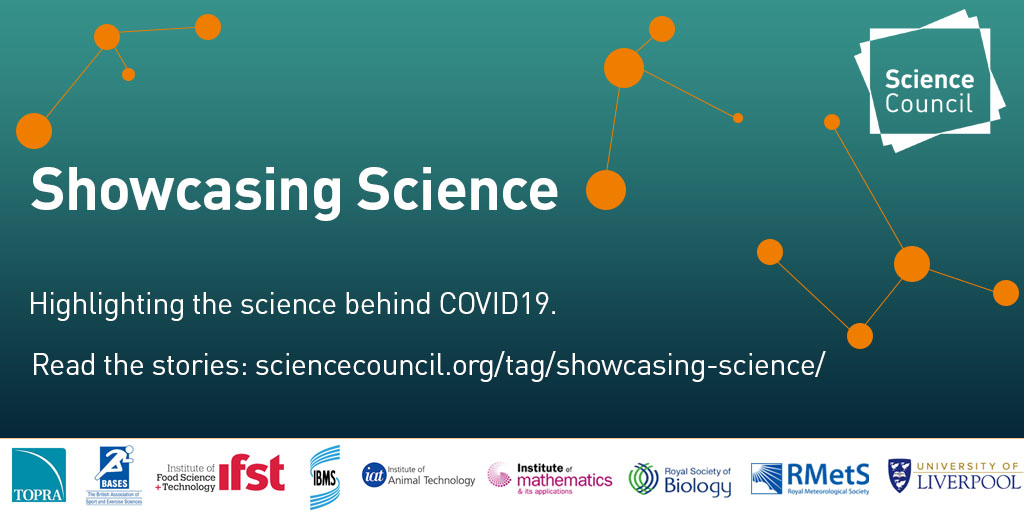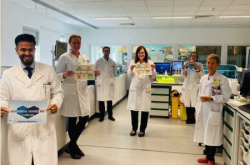
Showcasing Science: A Collaborative Approach to COVID-19 Antibody Testing
Lorna Taylor, Principal Clinical Scientist, Immunology (BCPS)
The provision of a COVID-19 antibody testing service presented many challenges. As SARS-CoV-2 was a novel virus, the scientific data was continuously evolving, and consequently, the decision-making processes had to be fluid and adaptable. In the early days, when the government announced that antibody testing would contribute to the COVID-19 national testing strategy, our Immunology departments formed a serology working group to discuss how we would respond. As a clinical Immunologist, I was excited to be involved in the early stages of planning, however it quickly became clear that even after combining multiple testing platforms across four hospital sites and discussing the potential of offering a 24/7 service, we were not going to be able to meet testing capacity. So when the high throughput options offered by Roche and Abbott appeared on the horizon, we breathed a collective sigh of relief.
Now we were venturing into unchartered territory. We had the theoretical testing capacity within our Biochemistry departments but how were we going to deliver two brand new serological assays in such an unprecedented time frame. Fortunately our newly formed Black Country Pathology Service (BCPS) network provided the framework to deliver a collaborative team response, combining the efforts of multiple departments across four NHS hospital Trusts. Our serology working group expanded beyond Immunology, to include colleagues from Biochemistry and valuable input from the Microbiologists who had already experienced COVID-19 testing and lived to tell the tale. On a national level, lessons had been learned from the PCR testing and this provided a valuable insight into the requirements for serology testing and time to make preparations.
The COVID era of social distancing required an innovative way of communicating, because face to face meetings were no longer an option. There was an appreciation that the success of this project would require communication between multiple departments across the network including Pathology, I.T, phlebotomy, specimen reception, occupational health and transport logistics. We used Microsoft Teams to facilitate team meetings and once you found the right camera angle and realised that yes you really do look like that, everyone relaxed into this new way of communicating. WhatsApp groups also provided a quick method of communication not only between BCPS staff but also with colleagues nationally to discuss data in the context of the evolving science. You just had to be careful you were responding to the correct group and not answering a question from the kids about what was for dinner! I would like to think that these forms of communication have offered a silver lining to this COVID shaped cloud and hope they become the norm in the future.
For me personally, the most exciting part of the process was leading the verification required to implement the assays locally. The process was complex and time-sensitive because we needed assurance that the performance of these assays not only replicated the data provided by PHE but that there was consistency across sites. My colleagues and I constructed a data base to collect and store the samples required for verification, which included voluntary samples obtained from staff that had suspected or proven COVID. There was very much a feeling amongst staff of wanting to contribute to the national effort, and I have never been more proud to be a part of the NHS. With our verification samples all prepared, we were able to respond quickly when the reagents were released and I completed the verification within the space of a week. There were many late nights involved, and much more re-adjustment of the camera angle was required!
As scientists, we know that I.T is a necessary evil and for this project the requirements were substantial and some might argue, particularly evil. We were faced with multiple pathology laboratory interface I.T systems, reporting of staff results and the national reporting of data. Reporting of pathology results does not normally need to include whether the subject is a member of staff or patient and what organisation they work for and as these are required for the Placers submissions, it added extra complexity to how the tests were built and subsequently ordered by phlebotomy services or managed by the labs. Early morning deadlines for submissions covering the previous 24 hours activity meant there was added pressure, and systems had to be implemented to gather data efficiently across all four sites. I will confess to being slightly relieved when the responsibility for this reporting fell to my Biochemistry colleagues! They did a fantastic job of keeping up with the reporting deadlines.
Overall the success of the implementation of COVID antibody testing has been due to the excellent communication between multiple teams of staff across our network and the sharing of knowledge to make appropriate decisions quickly. I have witnessed the dedication and passion of staff during times of great uncertainty and pressure. The response to COVID required adaptation, innovation and change within a constantly evolving situation, but staff have risen to the occasion and offered a service we can all be proud of.
Some of the Biochemistry and Immunology team involved in COVID antibody testing.
From front left:-
Lorna Taylor (Immunology)
Chris Wright (Biochemistry)
Caroline Webber (Immunology)
Afton Turner (Biochemistry)
Jane Eggington (Biochemistry)
This article was published as part of our Showcasing Science series, read the rest of the blogs here.

